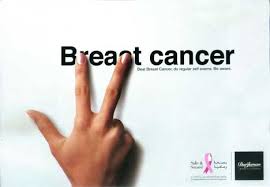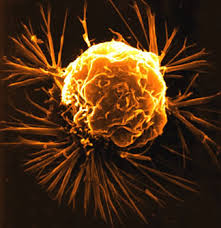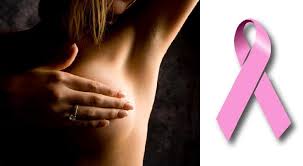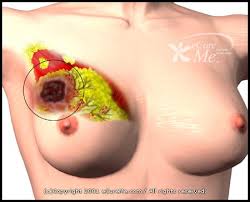
There are several different types of breast cancer. Some cancer diagnoses are followed by the words in situ, meaning the cancer is contained to a single area, such as a milk duct or lobule, and shows no sign of invasion. If the cancer breaks through the basement membrane that lines the cells from the surrounding lobules or ducts, it is called infiltrating or invasive carcinoma. From there, the cancer can spread to blood vessels, lymph nodes and other parts of the breast. If not detected early, it also can spread to other parts of the body.
The most common types of breast cancer include:
• Infiltrating (or invasive) ductal carcinoma. This form of breast cancer is by far the most common, accounting for 70 to 80 percent of all cases, according to the National Cancer Institute (NCI). As the mass grows, it can lead to a dimpling of the breast or the nipple retracting inward.
• Ductal carcinoma in situ (DCIS). Also known as intraductal carcinoma or non-invasive ductal carcinoma, DCIS refers to cancer cells confined to the milk duct of the breast with no evidence of invasion into the surrounding tissues. DCIS is now a common diagnosis due to the widespread use of screening mammography and usually shows up as calcifications on the mammogram. In situ cancers are noninvasive and are considered the earliest stage of breast cancer.
• Infiltrating (or invasive) lobular carcinoma. This invasive type of breast cancer can be difficult to detect because it often appears as a thickening within the breast and not a clearly defined mass. A small number of women diagnosed with infiltrating lobular carcinoma will develop the disease in both breasts. Lobular carcinoma accounts for less than 10 percent of invasive breast cancers, according the American Cancer Society (ACS).
• Inflammatory breast cancer. This form of the disease is considered a highly malignant type of breast cancer. Inflammatory breast cancer can spread rapidly producing symptoms of swelling and redness and skin that is warm to the touch. The ACS estimates that approximately 1 to 3 percent of all breast cancer diagnoses are inflammatory breast cancer.
• Lobular carcinoma in situ (LCIS). Also known as noninvasive lobular carcinoma, LCIS is more common among premenopausal women and often develops in both breasts or in several areas of one breast. Very few women diagnosed with LCIS develop an invasive form of breast cancer.
In addition to the more common forms of breast cancer, there are other rarer types of invasive breast cancers. These are:
• Paget’s disease. This disease is slow-growing cancer of the areola (pink area around the nipple) and nipple. Starting in the milk ducts of the nipple, Paget’s disease eventually grows onto the nipple itself. It is sometimes mistaken for eczema as it can create itchiness or a crusty appearance around the nipple. This form of breast cancer accounts for about 1 percent of all cases of breast cancer, according to the ACS.
• Medullary carcinoma. This type of infiltrating cancer is characterized by large cancer cells and a distinct margin between cancerous and normal tissue. It accounts for less than 5 percent of breast cancers, according to the ACS.
• Tubular carcinoma. This invasive cancer is a slow-growing form of breast cancer that is tube-shaped. It accounts for approximately 2 percent of all breast cancers, according to the ACS.
• Mucinous (colloid) cancers. This type of breast cancer contains a mucous protein within the cancer cells.
 Other, extremely rare breast cancers include:
Other, extremely rare breast cancers include:• Angiosarcoma, which is sometimes referred to as hemangiosarcoma
• Phyllodes tumor, which is normally seen in women of middle age who have a prior medical history of fibroadenomas
• Primary lymphoma
The NCI labels these as tumor subtypes that occur in the breast, but are not considered typical breast cancers.











